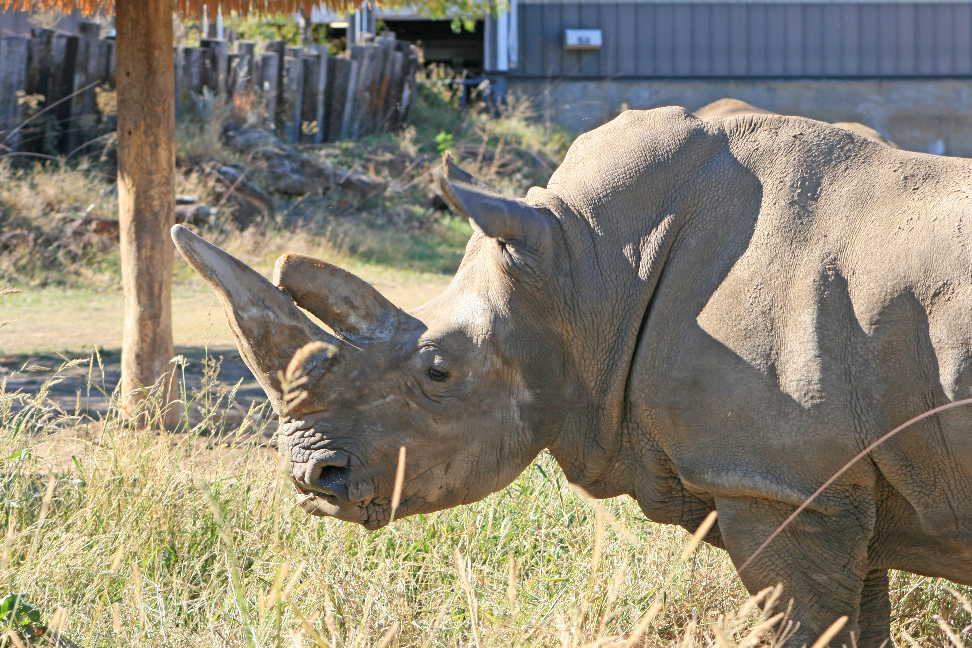Rolling Hills Zoo is mourning the loss of one its animal family members.
According to the zoo, Milly, one of its southern white rhinoceros, had to be euthanized on Wednesday, June 14, due to declining health and her advanced age. “We have been caring for Milly in her advanced age, trying to make her as comfortable as possible, shared Zoo Curator Brenda Gunder. “She was finding it extremely difficult to stand up for long periods of time and it became apparent that her quality of life was deteriorating.”
As some of the first animals in the Zoo, Milly and Wagasa arrived at Rolling Hills Zoo together as part of the White Rhinoceros Species Survival Plan. Born in South Africa, Milly’s first zoo home was at the Knoxville Zoo. She was then transferred in 1996 to Rolling Hills Zoo, on loan from the Knoxville Zoo, where she spent the second half of her life in the Zoo’s new rhino barn. Biologists estimate that wild rhinos live up to 35 years, but in captivity they may live up to 40 years. Milly is estimated to be between 46 – 51 years of age and has well exceeded the average rhino lifespan.
“Milly seemed to always look out for her friend Wagasa by keeping the males in line,” shared Head Keeper Vickie Musselman. “In turn, Wagasa would call to Milly if separated. Even though Milly is the smallest of all of our rhinos she has always been the little spit-fire when she felt that she needed to be and wasn’t shy about letting her keepers know.”
“All the animal care staff knows Milly to be a playful and spunky, a rhino that likes attention more than food,” commented rhino keeper Devney Olson-Bowen. “She never hesitated to walk over for a scratch and belly rub. She will be greatly missed by all who knew her.”
White Rhinos are considered a Near Threatened species with approximately 20,000 white rhinos remaining in the wild. Currently, white rhinos live in eight countries – South Africa, Namibia, Kenya, Zimbabwe, Botswana, Swaziland, Uganda, and Kenya. Unfortunately over the years their population numbers have declined due to habitat loss and poaching. In the past four years over 1,000 annually have been killed, and within the next 20 years they could be extinct.
Milly’s body has been transported to K-State for a necropsy.



